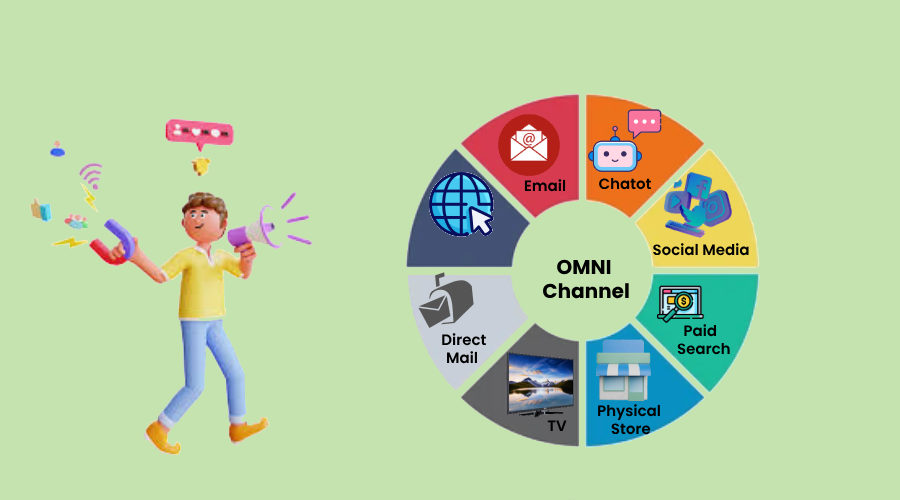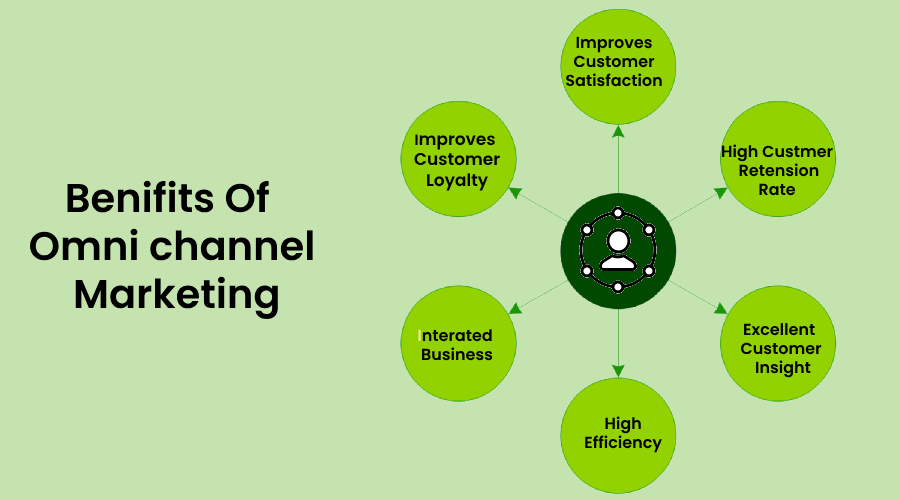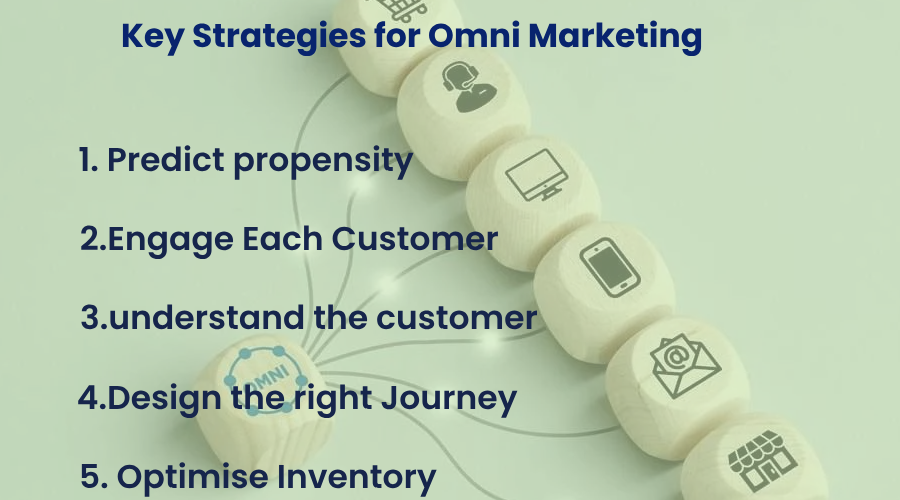Businesses are under constraint to deliver great customer experiences across multiple touch points in today’s technology-driven environment.
Consumers do not rely on a single channel to interact with brands. Instead, they browse websites, navigate through social media platforms, mobile applications, visit stores, and more in their quest to find purchases and engage with any products and services.
This change in consumer pattern has given rise to a very important aspect of omnichannel marketing, wherein all channels provide a flawless and integrated experience.
This blog discusses in depth the concept of omnichannel marketing, its importance, benefits, strategies, and real-world examples to help businesses create a unified customer experience.
Table of Contents
What is Omnichannel Marketing?
In an omnichannel approach, the customer’s journey is prioritized over the individual channels themselves.
Whether a customer interacts with a brand through social media, visits a physical store, engages via a mobile app, receives an email, or explores the website, the experience is consistent and unified.
The customer’s actions on one platform influence their experience on another, creating a fluid and personalized journey. An omnichannel approach places the customer’s journey separated for individual channels.
Whether a customer interacts through social Media, visits a physical store, engages a mobile application, receives an email or explores the website, the experience is going to be unified and consistent.
What the customer does on one platform affects the experience on another; it all fits together smoothly and personally.

Let’s say a customer is looking for a clothing brands website and adding items to cart. When they visit the store, a worker there can access their online cart and help them find the items in person.
If they leave without buying anything, the company might send them an email or a message on their app to remind them about the items they liked. They might even offer a discount.
This shows how omnichannel marketing works, all the ways to reach customers are linked up to give them a smooth shopping experience.
Importance of Omnichannel Marketing
Omnichannel marketing plays a key role for businesses that aim to meet the expectations of modern customers. As customers become more tech-savvy, they expect brands to give them a smooth and personal experience at every point of contact.
By giving a steady and joined-up experience, omnichannel marketing makes customers happier. Customers don’t have to say things twice or start over when they switch between channels, which leads to a better and more fun experience.
A smooth customer journey builds trust and loyalty. When customers feel that a brand gets them and looks after their needs on all platforms, they’re more likely to come back and keep engaging with the brand.
Omnichannel marketing gets customers more involved, which helps drive sales up.
By setting up many points of contact that steer buyers towards making a purchase, companies can grow their income. What’s more, the tailored approach of omnichannel marketing often leads to better conversion rates, making marketing efforts pay off more.
The Benefits of Omnichannel Marketing
Consistency across Channels
Omnichannel marketing is the ability to maintain consistency across all platforms. This means that whether a customer is browsing on a desktop, scrolling through a mobile app, or visiting a local store, they will encounter the same branding, messaging, and offers.
When everything matches up, it strengthens the brand’s image and cuts down on mix-ups, making it simpler for people to connect with the brand.

Improved Customer Engagement
Improved customer engagement Businesses can reach out to customers at many different points with omnichannel marketing, which boosts the chances of making a sale.
By creating an experience without disappointment, companies can hold customers’ interest throughout their buying journey, from awareness about a product to getting help after buying it. This ongoing interaction builds stronger connections and encourages customers to come back.
Better data insights
When businesses use marketing across many channels, they can collect information from different sources and combine it to create a complete picture of each customer.
This full view of how customers act helps businesses make choices based on facts, optimize their marketing, and make the customer’s experience better.
Having better insights from data also means companies can target their efforts more, which can lead to more sales and a better return on their investment.
Key Strategies for Creating a Coherent Omnichannel Experience

Unified Customer Data Platform
An integrated customer data platform (CDP) is essential for an omnichannel environment. With that information, businesses are able to view each customer as a whole. So what we enable is those tailored experiences no matter the channels, giving customers content and offering recommendations fitting to their preferences and behavior.
Consistent messaging and branding
When the messages are being sent out, they should sound and look like your brand, whether that be through email or SMS. This entails employing a consistent tone of voice, aesthetic features, and value points irrespective of where they appear.
Not only does consistency support brand reinforcement, but it also enables the customer to become familiar with and trust your brand regardless of where they come across you. Optimized Mobile Experience
Mobility Markup is now highly in use; it became more important for businesses to optimize their mobile versions too, and therefore omnichannel marketing gained value. Mobile users want a site that loads quickly, is easy to navigate, and is responsive on mobile devices.
By making your website and apps responsive with quality designs, you can make the customer experience smoother by decreasing friction in their journey.
Customer-Centric Approach
Omnichannel is designed with a customer-centric approach. A good grasp of customer needs and preferences makes a business tailor its strategies to meet those needs. It includes personal interactions, ensuring a single contact experience and making every interaction count toward your customer journey.
Exploiting Technology
Technology plays a vital role in enabling a flawless omnichannel experience. Tools such as marketing automation, AI-driven chatbots, and personalized recommendation engines help businesses deliver timely and relevant content to customers.
Technology can also optimize processes, which help to cut operational costs and improve the customer experience.
Case studies of Successful Omnichannel Strategies
Sephora

Sephora, a global beauty retailer, has successfully implemented an omnichannel strategy that integrates both online and offline experiences. Customers can use the Sephora mobile app to virtually try on products, access personalized recommendations, and check product availability in stores.
The app also syncs with in-store experiences, allowing customers to redeem points, access their purchase history, and receive tailored offers. This ideal integration across channels has helped Sephora enhance customer engagement and drive sales.
Starbucks

Starbucks has one of the best examples of omnichannel marketing from its mobile application, loyalty program, and overall store experience. The Starbucks Rewards app enables customers to order and pay for items in advance, earn rewards, and receive customized promotions.
The in-app is integrated into the store experience, making way for redemption of rewards that gives customers a bespoke coffee buying journey. This command not only solves customer-centric problems but perhaps also builds brand loyalty.
Nike
With an omnichannel strategy, Nike aims to deliver personal and consistent experiences from online shopping to local stores. Customers can use the Nike app for early access to products, recommended training sessions, and more than just new drops with push notifications.
Nike additionally connects its app to in-store experiences, including the booking of products online for an offline purchase. Using this omnichannel strategy has delivered stronger customer relationships and boosted sales for Nike.
Challenges in Implementing Omnichannel Marketing
1. Data Unification Across Platforms
A major hurdle in omnichannel marketing is unifying customer data across various platforms. Customer data often exists in separate systems, making it challenging to create a cohesive customer profile.
Solution: Integrating this data requires robust systems like a Customer Data Platform (CDP), which can be resource-intensive.
2. Consistency in messaging, branding, and experience
Ensuring consistent messaging, branding, and customer experience across all channels can be difficult.
Challenges: This consistency requires collaboration between different teams and a centralized strategy, which is especially challenging in larger organizations.
3. Integration of Disparate Systems
Integrating various systems, such as CRM, e-commerce platforms, and POS systems, to enable a seamless customer journey is typically complex.
Impact: This complexity can lead to inefficiencies and delays in delivering a consistent omnichannel experience.
4. Upgrading Legacy Systems
Upgrading legacy systems to support omnichannel marketing is often expensive and time-consuming.
Challenges: Deploying new technology can have long cycle times and significant costs, making it a considerable investment.
5. Overcoming organizational silos
Achieving omnichannel success requires breaking down internal silos and fostering organization-wide collaboration.
Cultural Transition: This shift can be tough, particularly for large, structured organizations where change might not come easily.
6. Complexity in Monitoring and Analyzing Customer Interactions
Monitoring and analyzing the vast number of customer interactions across multiple channels can be convoluted.
Solution: Sophisticated analytics tools and constant optimization are necessary to truly measure and improve ROI and make data-driven decisions.
7. Financial and Operational Costs
The financial and operational requirements of implementing omnichannel marketing can be overwhelming, particularly for smaller organizations.
Investment: Integrating systems and maintaining uniformity require significant investment, including staff training and ongoing maintenance.
8. The Reward of Overcoming Omnichannel Challenges
Despite the challenges, businesses that successfully implement an omnichannel approach are able to provide superior customer experiences.
Outcome: This can lead to increased customer loyalty and growth.
How to Measure the Success of Your Omnichannel Strategy
To measure the success of your omnichannel strategy effectively, you need to focus on key metrics that offer insights into how well your efforts are working.
Let’s break down a few important methods you can use to measure success, explained in simple terms to help you get the best out of your omnichannel approach.
Also Read: How to Measure your Marketing Performance.
1. Customer Lifetime Value (CLV):
Customer Lifetime Value (CLV) tells you how much revenue a customer brings to your business throughout their relationship with you. It’s not just about one purchase but about how much a customer is worth to your brand over time.
If your CLV is increasing, it means your customers are staying longer, spending more, and likely coming back for repeat purchases.
This shows that your omnichannel strategy is keeping customers engaged and building loyalty.
How to use it: Keep an eye on the trends. If your CLV goes up after launching an omnichannel approach, you’re doing something right in creating a seamless customer experience across different touchpoints.
2. Conversion Rate:
The conversion rate measures how many people take the action you want them to, like making a purchase, signing up for a newsletter, or filling out a form. It’s a clear indicator of how well your strategy is driving people from interest to action.
How to use it: Track the conversion rate across each channel (social media, email, website, etc.). If one channel is doing better than others, it’s worth looking into what’s working there and how you can replicate it across the rest of your customer journey.
Also Read: How to Increase Your Conversion Rate.
3. Customer Satisfaction Scores (CSAT):
Customer Satisfaction Scores (CSAT) come from surveys where customers rate their experience with your brand. This gives you direct feedback on how well your omnichannel strategy is working.
Happy customers mean you’re meeting their expectations, while lower scores indicate areas where you need to improve.
How to use it: Conduct surveys at key points, like after a purchase or customer service interaction. Compare the scores across different platforms to see where your experience may need tweaking.
4. Net Promoter Score (NPS):
Net Promoter Score (NPS) measures customer loyalty by asking how likely customers are to recommend your brand to others. High NPS scores show that customers trust your brand and are happy with the experience you’re providing.
How to use it: If your NPS score increases after implementing an omnichannel strategy, it’s a good sign that you’re providing a consistent and positive experience across platforms. Loyal customers are often the best advocates for your brand, and they help bring in new business.
5. Customer Retention Rate:
Retention rate tracks how well you’re keeping existing customers. A good omnichannel strategy helps customers feel connected to your brand, no matter where they engage with you, making them more likely to stick around.
How to use it: Monitor how many customers stay with your brand over a given period. If retention rates improve, your omnichannel strategy is likely keeping customers happy and engaged across channels.
6. Average Order Value (AOV):
Average Order Value (AOV) measures how much customers spend per transaction. If your omnichannel efforts are working, you should see an increase in AOV as customers engage more deeply with your brand and explore different products or services.
How to use it: Analyze AOV trends across channels to see if customers are spending more as they interact with your brand through various touchpoints.
7. Cross-Channel Conversion:
Cross-channel conversion tracks how customers move from one channel to another before making a purchase. For example, a customer might first see your product on Instagram, visit your website to learn more, and then make a purchase in your physical store.
How to use it: Use tools like Google Analytics or customer data platforms (CDPs) to track this behavior. High cross-channel conversion rates mean your channels are working well together to provide a smooth customer journey.
By using these methods, you’ll have a clearer view of how your omnichannel strategy is performing. The key is to monitor these metrics regularly and make adjustments as needed to continue improving the customer experience.
When all these pieces work together, you’ll not only keep your customers happy but also see growth in your business!
Conclusion
Omnichannel marketing is not an option anymore but rather a must if businesses want to succeed in this furious competitive environment.
In this way, when we make a fluent and integrated experience for our customers across all the points of contact with brands, it can help us in improving customers’s satisfaction, constructing loyalty, and driving growth.
Implementing an omnichannel strategy comes with its own set of challenges, but the returns on investment are truly worth it.
Through executing on important tenants such as unified customer data, consistent messaging, and technology enablement, businesses can deliver a best-in-class omnichannel experience that drives results.

